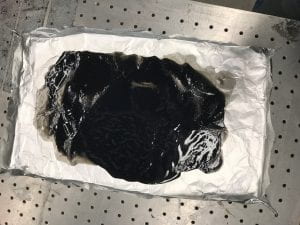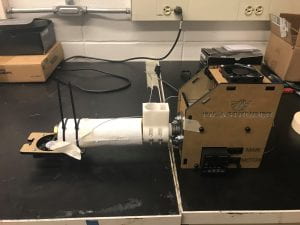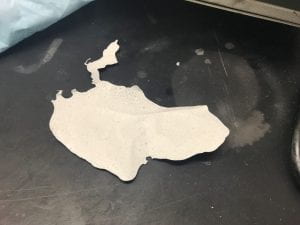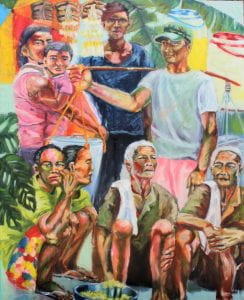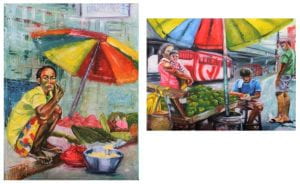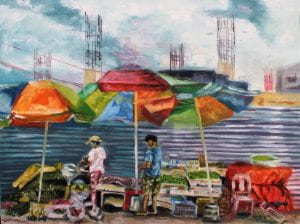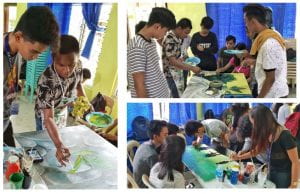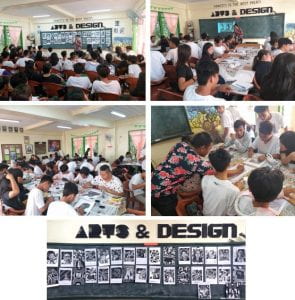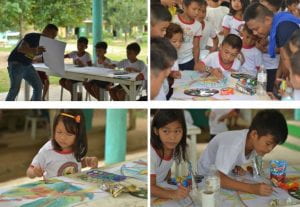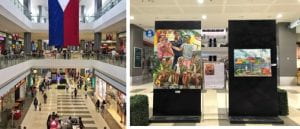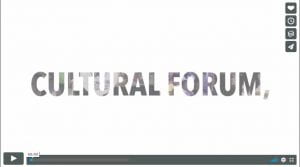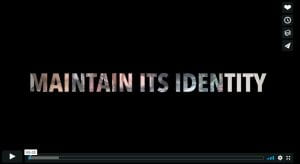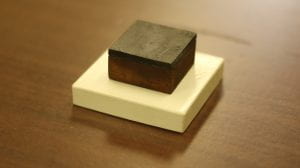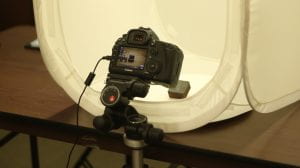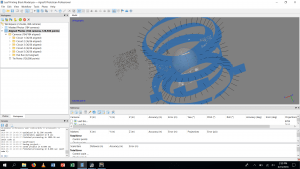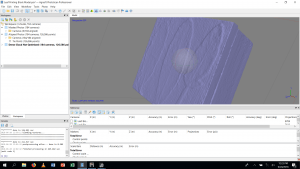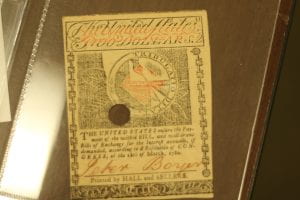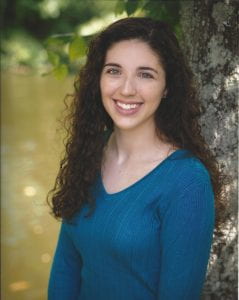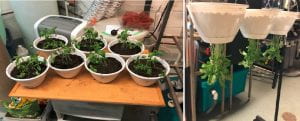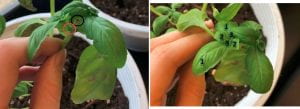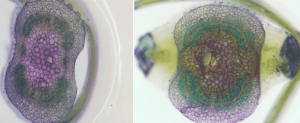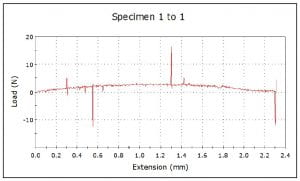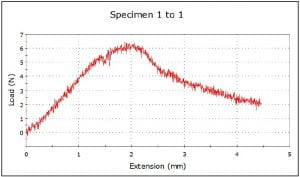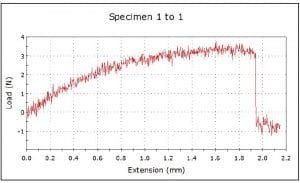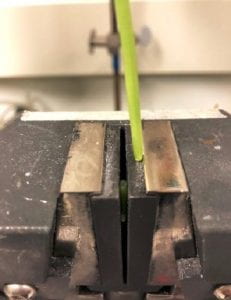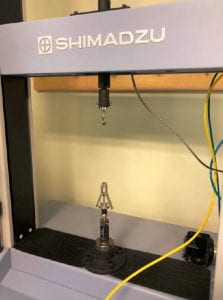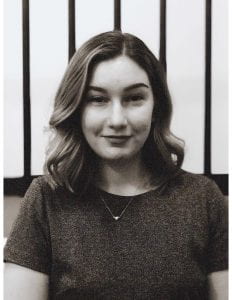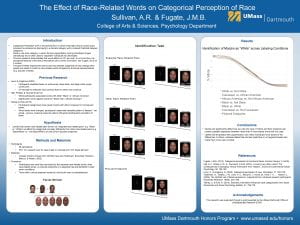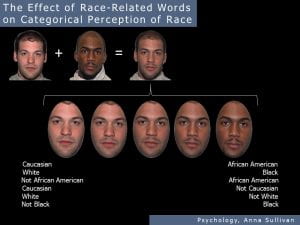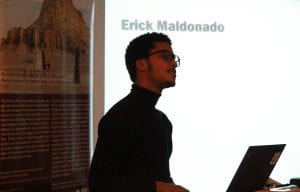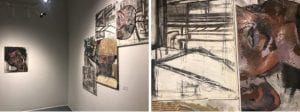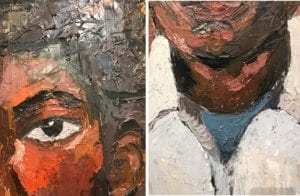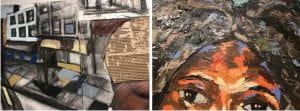Research in Biology
Anthropogenic Road Noise Effects on Small Mammals
by Alyssa Giordano
Over the summer I worked on an experiment that investigated the effects of chronic road (anthropogenic) noise on free-living small mammals. I was a recipient of the 2020 summer research award from the Office of Undergraduate Research (OUR), which helped me greatly to pursue this research under the supervision of Dr. Michael Sheriff. I have always felt a strong connection to ecology and conservation biology, and this project has captivated me and rooted me further to this field, propelling me to pursue this kind of research in my career. This opportunity has helped me in deciding to continue my education to earn a master’s degree. I hope to pursue further projects related to anthropogenic effects, with implications to ecology and wildlife management.
Background:
Predators can alter prey populations through direct killing and consumption, but also through non-consumptive, risk effects (Peacor et al. 2020; Sheriff et al. 2020). Such effects include changes to behavior, physiology, fecundity, and survival. Small mammals for example are known to respond to predation risk by changing their habitat use, activity patterns, and foraging behavior (Lima 1998).
Chronic traffic (anthropogenic) noise has shown dramatic increases over the last few decades with the expansion of resources and transportation (Shannon et al. 2016). For example, the United States’ population increased by about one third and traffic nearly tripled between 1970 and 2007 (Barber et. al. 2010). Road noise can affect prey’s ability to perceive predation risk cues and, thus, alter their risk responses which can be critical to survival (Francis and Barber 2013; Shannon et al. 2016). Road noise is hypothesized to alter prey responses to predation risk in three distinct ways, i) mask auditory cues of predation resulting in greater antipredator responses, as prey have more difficulty detecting their predators and find the area riskier (Barber et. al. 2010), ii) mask and distract prey due to the excess of auditory signals resulting in a reduction in antipredator responses, as prey do not perceive the area as risky given they cannot detect their predators (Blumstein 2014, Chan et. al. 2010), or iii) be perceived as a threat itself, with increased antipredator responses above that with which prey respond to risk alone (Shannon et. al. 2016, Tyack et. al. 2011). Within this research I tested each of these hypotheses by examining the food intake and foraging behavior of free-living deer mice concurrently exposed to both road noise and predation risk. I predicted that if road noise resulted in an increase in antipredator behavior, small mammals would find the area to be riskier and forage less. If road noise resulted in a decrease in antipredator behavior, small mammals would be distracted by the excess sound and forage more. If road noise resulted in an increase in antipredator behavior when not concurrently treated with predation risk, small mammals would find the road noise itself risky and forage less.
Methods:
To conduct my experiment, I used audio playbacks to manipulate the acoustic environment of free-living deer mice and other small mammals. My audio treatments consisted of non-predatory control, avian predators, road noise, and road noise + avian predators. Each treatment was played for three days, with a two day buffer between treatments to avoid contamination of effects from one treatment to the next. To measure foraging activity, I set up giving-up density (GUD) trays. GUDs are based on the marginal value theorem (Charnov 1976), such that the return of a foraging patch diminishes and the cost increases the more an animal forages, ultimately the animals ‘give up’ and move on (Brown et. al. 1999). The point at which an animal gives up has been shown to be impacted by predation risk (Brown 1988). Plastic foraging trays were filled with 2.5g of millet seed and 2 cups of sand (figure 1). Six trays were placed into the field for 2 consecutive 24 periods beginning at 0700h on days 2 and 3 of a treatment. Motion detecting cameras (purchased as part of the OUR grant) were deployed at 3 of the GUDs to measure foraging behavior. Each treatment was replicated three times and the total duration of the experiment occurred from July 1st to September 13th, 2020.
I analyzed the foraging data using 2-way ANOVAs and a tukey test with treatment and night as fixed effects (RStudio Desktop 1.3.1093).
I found that there was a significant effect of treatment and of night (Table 1) on the amount of food eaten by small mammals (Fig. 2). When exposed to predation risk small mammals decreased the amount of food eaten, when exposed to predation risk and road noise small mammals ate a similar amount, and when exposed to road noise alone small mammals slightly increased the amount that they ate compared to the control treatment.
I also found that small mammals ate more on night 2 compared with night 1 (Fig. 2).
Discussion:
This data supports the hypothesis that road noise will cause prey to reduce their antipredator responses to predation risk. (Chan et al. 2010) found something similar, that during noise exposure Caribbean hermit crabs allowed simulated predators to get closer, suggesting they had an impaired ability to respond. This may occur because prey have a harder time perceiving risk cues when also exposed to noise, creating a clouded soundscape. This will have consequences to prey by exposing them to predators more, as the prey will not engage in antipredator responses as much or as fast.
I still need to analyze the behavioral data from the motion detecting cameras with footage taken over 2.5 months. The video footage will be analyzed for the number of visits to the GUDs, the time spent during each visit, and the time spent being vigilant. This portion of the project will delve deeper into the specific effects on animal risk response when exposed to chronic road noise and predation. I have determined the general effect of chronic road noise, but it will be very interesting to see their true behavior, and if it shows anything that the preliminary foraging data cannot.
A special thanks to the Office of Undergraduate research and the College of Arts and Sciences for providing me with funding for my project. Though the analysis is not yet fully complete, the funding has given me an invaluable opportunity to explore an important wildlife conservation topic in depth. Finally, I’d like to acknowledge and thank Dr. Michael Sheriff for the support and guidance throughout my project.
References:
Barber, J. R., Crooks, K. R., & Fristrup, K. M. (2010). The costs of chronic noise exposure for terrestrial organisms. Trends in ecology & evolution, 25(3), 180-189.
Blumstein, D. T. (2014). Attention, habituation, and antipredator behaviour: implications for urban birds. Avian urban ecology, 41-53.
Brown, J.S., Laundre, J.W., & Gurung, M. 1999. The ecology of fear: optimal foraging, game theory, and trophic interactions. Journal of Mammalogy 80: 385-399.
Brown, J.S. 1988. Patch use as an indicator of habitat preference, predation risk, and competition. Behavioral Ecology and Sociobiology 22: 37-47.
Chan, A. A. Y. H., Giraldo-Perez, P., Smith, S., & Blumstein, D. T. (2010). Anthropogenic noise affects risk assessment and attention: the distracted prey hypothesis. Biology letters, 6(4), 458-461.
Charnov, E. L. (1976). Optimal foraging, the marginal value theorem.
Francis, C. D., & Barber, J. R. (2013). A framework for understanding noise impacts on wildlife: an urgent conservation priority. Frontiers in Ecology and the Environment,11(6), 305-313.
Lima, S.L. 1998. Nonlethal effects in the ecology of predator-prey interactions. What are the ecological effects of anti-predator decision-making? BioScience 48: 25-34.
Peacor, S. D., Barton, B. T., Kimbro, D. L., Sih, A., & Sheriff, M. J. (2020). A framework and standardized terminology to facilitate the study of predation‐risk effects. Ecology, e03152.
Shannon, G., Crooks, K. R., Wittemyer, G., Fristrup, K. M., & Angeloni, L. M. (2016). Road noise causes earlier predator detection and flight response in a free-ranging mammal. Behavioral Ecology, 27(5), 1370-1375.
Sheriff, M. J., Peacor, S. D., Hawlena, D., & Thaker, M. (2020). Non‐consumptive predator effects on prey population size: A dearth of evidence. Journal of Animal Ecology.
Tyack, P. L., Zimmer, W. M., Moretti, D., Southall, B. L., Claridge, D. E., Durban, J. W., … & McCarthy, E. (2011). Beaked whales respond to simulated and actual navy sonar. PloS one, 6(3).
























